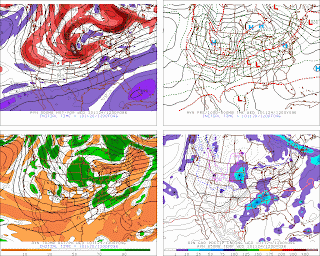Today's activity is pretty impressive for LES across eastern NYS and WNE. By this evening additional accumulations are expected:
on top of what you may have already received in your locality:
PUBLIC INFORMATION STATEMENT SPOTTER REPORTS NATIONAL WEATHER SERVICE ALBANY NY 648 AM EST MON DEC 6 2010 THE FOLLOWING ARE UNOFFICIAL OBSERVATIONS TAKEN DURING THE
PAST 3 HOURS FOR THE STORM THAT HAS BEEN AFFECTING
OUR REGION. APPRECIATION IS EXTENDED
TO HIGHWAY DEPARTMENTS...COOPERATIVE OBSERVERS...SKYWARN SPOTTERS
AND MEDIA FOR THESE REPORTS. THIS SUMMARY IS ALSO AVAILABLE ON OUR
HOME PAGE AT WEATHER.GOV/ALBANY
********************STORM TOTAL SNOWFALL********************
LOCATION STORM TOTAL TIME/DATE COMMENTS
SNOWFALL OF
(INCHES) MEASUREMENT
MASSACHUSETTS
...BERKSHIRE COUNTY...
NORTH OTIS 1.0 450 AM 12/6 SPOTTER
NEW YORK
...ALBANY COUNTY...
KNOX 2.0 642 AM 12/6 WXNET 6
VOORHEESVILLE 0.9 600 AM 12/6 NWS EMPLOYEE
SOUTH BERNE 0.5 542 AM 12/6 WXNET 6
VOORHEESVILLE 0.4 644 AM 12/6 WXNET 6
...GREENE COUNTY...
ASHLAND 4.0 622 AM 12/6 WXNET 6
ELKA PARK 3.0 519 AM 12/6 SPOTTER
HAINES FALLS 2.0 524 AM 12/6 SPOTTER
HALCOTT CENTER 2.0 644 AM 12/6 WXNET 6
HALCOTT 1.0 356 AM 12/6 SPOTTER
...MONTGOMERY COUNTY...
PALATINE BRIDGE 2.0 610 AM 12/6 WXNET 6
GLEN 1.0 617 AM 12/6 WXNET 6
...SCHENECTADY COUNTY...
PRINCETOWN 1.3 553 AM 12/6 WXNET 6
DUANESBURG 1.0 626 AM 12/6 WXNET 6
...SCHOHARIE COUNTY...
JEFFERSON 5.8 428 AM 12/6 WXNET 6
GILBOA 2.0 620 AM 12/6 SPOTTER
RICHMONDVILLE 1.5 530 AM 12/6 WXNET 6
...ULSTER COUNTY...
SAUGERTIES T 410 AM 12/6 WXNET 6
VERMONT
...BENNINGTON COUNTY...
WOODFORD 3.5 553 AM 12/6 WXNET 6With winds varying between West and Northwest through tomorrow these areas of LES
and upslope snow will likely persist but the bands of heavier vary in their location.
During Wednesday and Thursday of this week a shot of BELOW normal cold will move
down across the Northeast. On these days it looks like temperatures will be near
10 degrees below normal for the daytime highs; this means for Albany afternoon
temperatures will stay below freezing for the highs (upper 20s)
On Friday a low pressure system coming in from the northwest(we call
this a "Clipper" system)will pose the threat for some periods of light snow
and snow showers. There is a chance that a secondary are of low pressure may
try to form near the east tip if Long Island or over southeast New England.
While the possibility of this development appears to be slight at this time and
if it were to occur it would be a weak system,it could nonetheless result in a
period of steady snow for a few hours during the afternoon and evening time from
Albany east across Western New England. This might result in a few inches of snow.
By Friday though the weekend, temperatures will be moderating some getting back
to almost normal.
By later Sunday into Early next week another storm threat looms and this one could be
a significant winter storm for many of us. Its way too early to start to talk about specifics just know
that there is at least a threat for such an event to occur.
Below are images from some of the longer range weather data for Sunday and Monday of next week.
This is the weather model known as the EC and this chart shows the expected conditions
for next Sunday evening 12 Dec for 7pm at night.
The upper right map is a forecast for the surface (showing areas of high and low pressure.)
This chart is valid for Monday evening, 7pm the 13th of December:
This is data from the GFS (weather model):The forecast is valid for Sunday (12 Dec) evening 7pm:
The above map is valid for Monday afternoon the 13th (1pm).
Both look nasty for sure thus our concern.
More updates to follow over the upcoming days....























